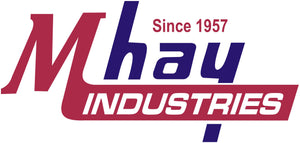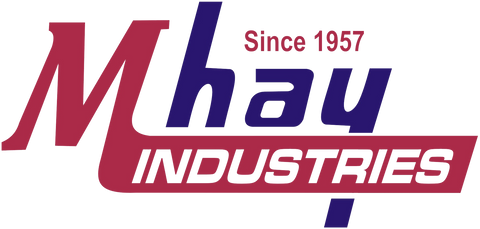Advancements in Surgical Veterinary Tools: Exploring New Possibilities
Recent Post
Archive
- December 2023
-
- The Veterinary Tools Revolution: A Journey Towards Advanced Animal Care
- Mhay Industries: A Testament to Quality and Innovation in Veterinary Tools
- A Look Behind the Scenes: How Mhay Industries' Tools are Made
- Expanding Your Veterinary Practice: Essential Tools in Your Arsenal
- The Role of Proper Equipment in Successful Small Animal Surgeries
- Global Recognition: Mhay Industries' Veterinary Tools Trusted Worldwide
- Veterinary Tools: A Comprehensive Buying Guide
- Animal Health and Welfare: Essential Tools in Handling Small Animals
- The Impact of Quality Tools on Your Veterinary Practice
- The Role of Veterinary Tools in Animal Rescue Centers

Advancements in Surgical Veterinary Tools: Exploring New Possibilities
Dec 16, 2023
In the dynamic field of veterinary medicine, the evolution of surgical tools is pivotal in enhancing the quality of care provided to our animal companions. In this blog post, we embark on a journey to explore the latest advancements in surgical veterinary tools, shedding light on how these innovations are opening new possibilities and revolutionizing the way veterinarians approach surgeries.
1. Precision Instrumentation for Minimally Invasive Procedures:
The advent of precision instrumentation has ushered in a new era of minimally invasive veterinary surgeries. Advanced laparoscopic and endoscopic tools allow veterinarians to perform intricate procedures through small incisions, resulting in reduced trauma, faster recovery times, and improved overall patient outcomes.
2. Laser Technology for Precision and Healing:
Laser technology has become a game-changer in veterinary surgery. Laser surgical tools offer precision in tissue cutting and coagulation, minimizing bleeding and reducing the risk of infection. Additionally, the therapeutic benefits of lasers contribute to faster healing and reduced postoperative discomfort for the animal patient.
3. Robotics in Veterinary Surgery:
The integration of robotics has brought about a paradigm shift in the precision and control available to veterinarians. Robotic surgical systems allow for enhanced dexterity, 3D visualization, and precise movements during procedures. This technological leap is particularly significant in complex surgeries, contributing to improved outcomes and a higher level of safety.
4. Advanced Imaging for Enhanced Diagnosis and Planning:
Surgical planning has reached new heights with advanced imaging technologies. High-resolution imaging tools, such as CT scans and MRIs, provide veterinarians with detailed insights into anatomical structures. This aids in accurate preoperative planning, allowing for a more targeted and effective approach to surgical interventions.
5. 3D Printing for Customization:
The advent of 3D printing has revolutionized the creation of customized surgical tools and implants. Veterinarians can now have access to patient-specific instruments, ensuring a perfect fit and optimal functionality. This level of customization contributes to improved surgical precision and better outcomes for the animal patient.
6. Smart Instruments with Integrated Sensors:
Smart surgical instruments equipped with integrated sensors are becoming increasingly prevalent. These instruments provide real-time feedback to surgeons, offering insights into parameters such as pressure, temperature, and tissue characteristics. This technology enhances decision-making during surgery and promotes a higher level of safety.
7. Biocompatible Materials for Durability and Safety:
The materials used in surgical veterinary tools have seen advancements as well. Biocompatible materials are now widely employed, ensuring the safety of the animal patient. These materials also contribute to the durability and longevity of the instruments, reducing the need for frequent replacements.
Conclusion: Shaping the Future of Veterinary Surgery with Innovation:
Advancements in surgical veterinary tools are not just about embracing new technologies; they represent a commitment to elevating the standard of care for our animal companions. The possibilities brought about by these innovations extend beyond the operating room, influencing recovery times, minimizing discomfort, and ultimately enhancing the well-being of our beloved pets. As veterinarians continue to explore new possibilities in surgical interventions, the future holds exciting potential for even more groundbreaking advancements in the world of veterinary medicine. Stay tuned as the journey of innovation unfolds, shaping the future of veterinary surgery.
1. Precision Instrumentation for Minimally Invasive Procedures:
The advent of precision instrumentation has ushered in a new era of minimally invasive veterinary surgeries. Advanced laparoscopic and endoscopic tools allow veterinarians to perform intricate procedures through small incisions, resulting in reduced trauma, faster recovery times, and improved overall patient outcomes.
2. Laser Technology for Precision and Healing:
Laser technology has become a game-changer in veterinary surgery. Laser surgical tools offer precision in tissue cutting and coagulation, minimizing bleeding and reducing the risk of infection. Additionally, the therapeutic benefits of lasers contribute to faster healing and reduced postoperative discomfort for the animal patient.
3. Robotics in Veterinary Surgery:
The integration of robotics has brought about a paradigm shift in the precision and control available to veterinarians. Robotic surgical systems allow for enhanced dexterity, 3D visualization, and precise movements during procedures. This technological leap is particularly significant in complex surgeries, contributing to improved outcomes and a higher level of safety.
4. Advanced Imaging for Enhanced Diagnosis and Planning:
Surgical planning has reached new heights with advanced imaging technologies. High-resolution imaging tools, such as CT scans and MRIs, provide veterinarians with detailed insights into anatomical structures. This aids in accurate preoperative planning, allowing for a more targeted and effective approach to surgical interventions.
5. 3D Printing for Customization:
The advent of 3D printing has revolutionized the creation of customized surgical tools and implants. Veterinarians can now have access to patient-specific instruments, ensuring a perfect fit and optimal functionality. This level of customization contributes to improved surgical precision and better outcomes for the animal patient.
6. Smart Instruments with Integrated Sensors:
Smart surgical instruments equipped with integrated sensors are becoming increasingly prevalent. These instruments provide real-time feedback to surgeons, offering insights into parameters such as pressure, temperature, and tissue characteristics. This technology enhances decision-making during surgery and promotes a higher level of safety.
7. Biocompatible Materials for Durability and Safety:
The materials used in surgical veterinary tools have seen advancements as well. Biocompatible materials are now widely employed, ensuring the safety of the animal patient. These materials also contribute to the durability and longevity of the instruments, reducing the need for frequent replacements.
Conclusion: Shaping the Future of Veterinary Surgery with Innovation:
Advancements in surgical veterinary tools are not just about embracing new technologies; they represent a commitment to elevating the standard of care for our animal companions. The possibilities brought about by these innovations extend beyond the operating room, influencing recovery times, minimizing discomfort, and ultimately enhancing the well-being of our beloved pets. As veterinarians continue to explore new possibilities in surgical interventions, the future holds exciting potential for even more groundbreaking advancements in the world of veterinary medicine. Stay tuned as the journey of innovation unfolds, shaping the future of veterinary surgery.
← Older Post Newer Post →
Manufacturers & Exporter of Equine Dental Tools , Farrier Tools & Small Animal Dentistry.
- Circular Road , Sialkot - Pakistan
- info@mhayindustries.com
Information
My Account
Newsletters
Copyright © Mhay Industries 2024 All Rights Reserved.





